Vehicle Inspection Checklist Samples
-

Commercial Vehicle Inspection Checklist
download now -
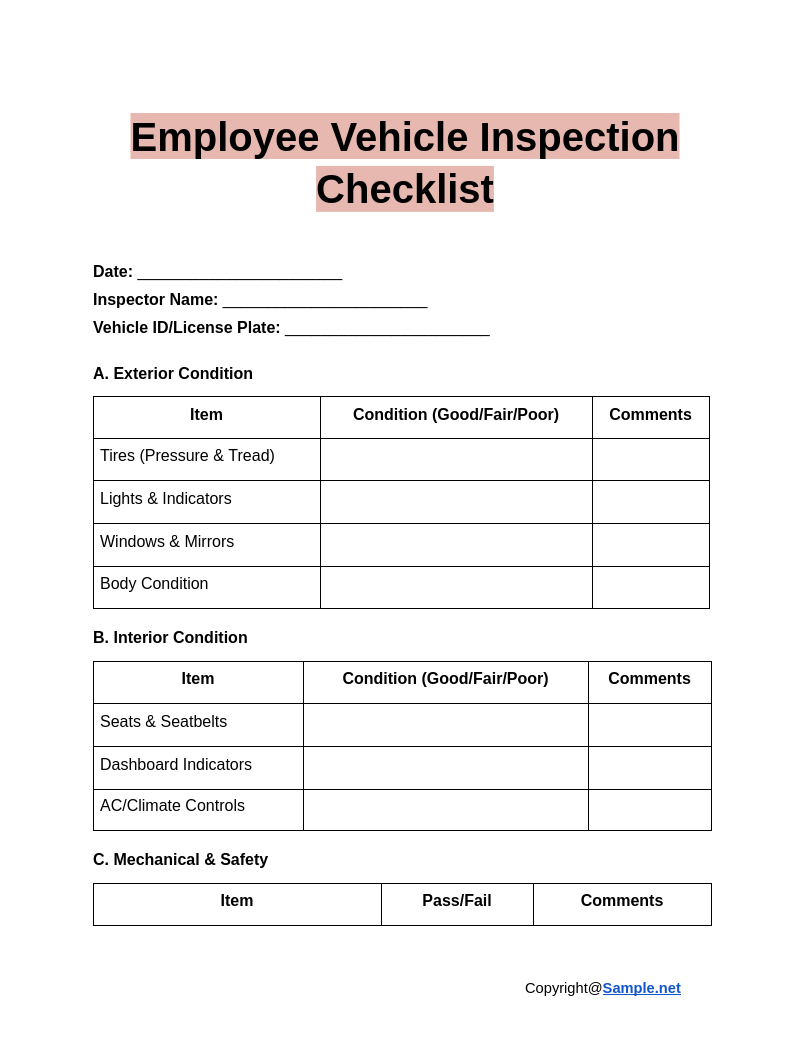
Employee Vehicle Inspection Checklist
download now -
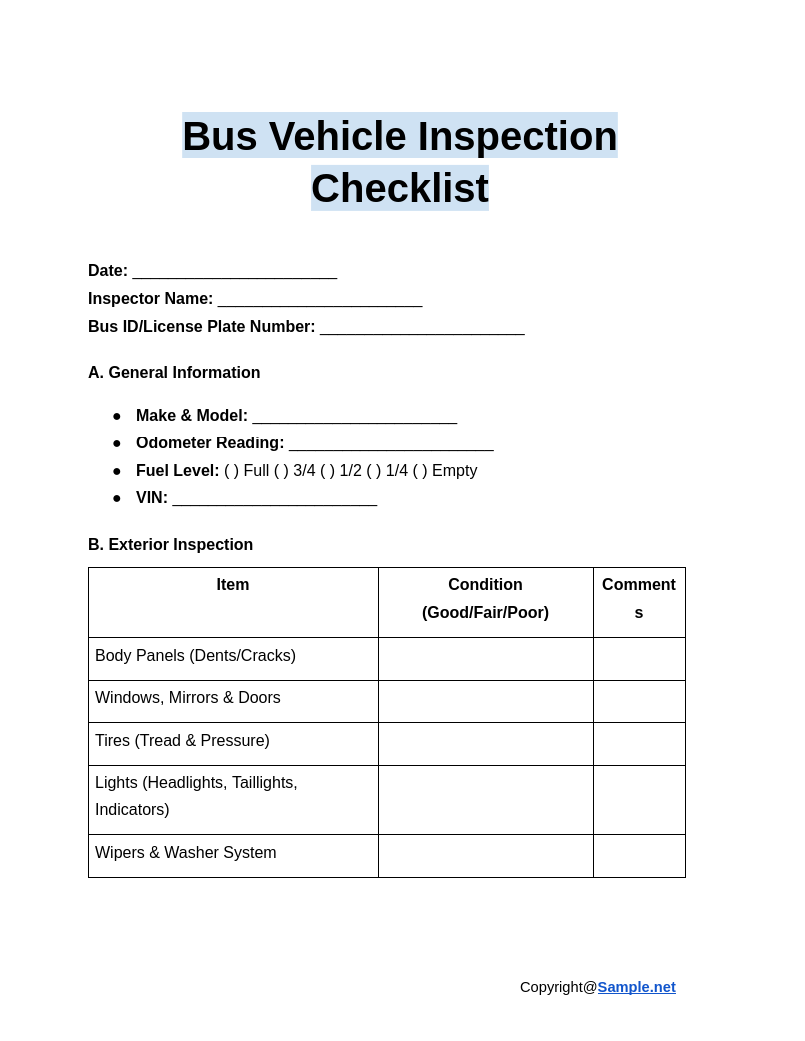
Bus Vehicle Inspection Checklist
download now -
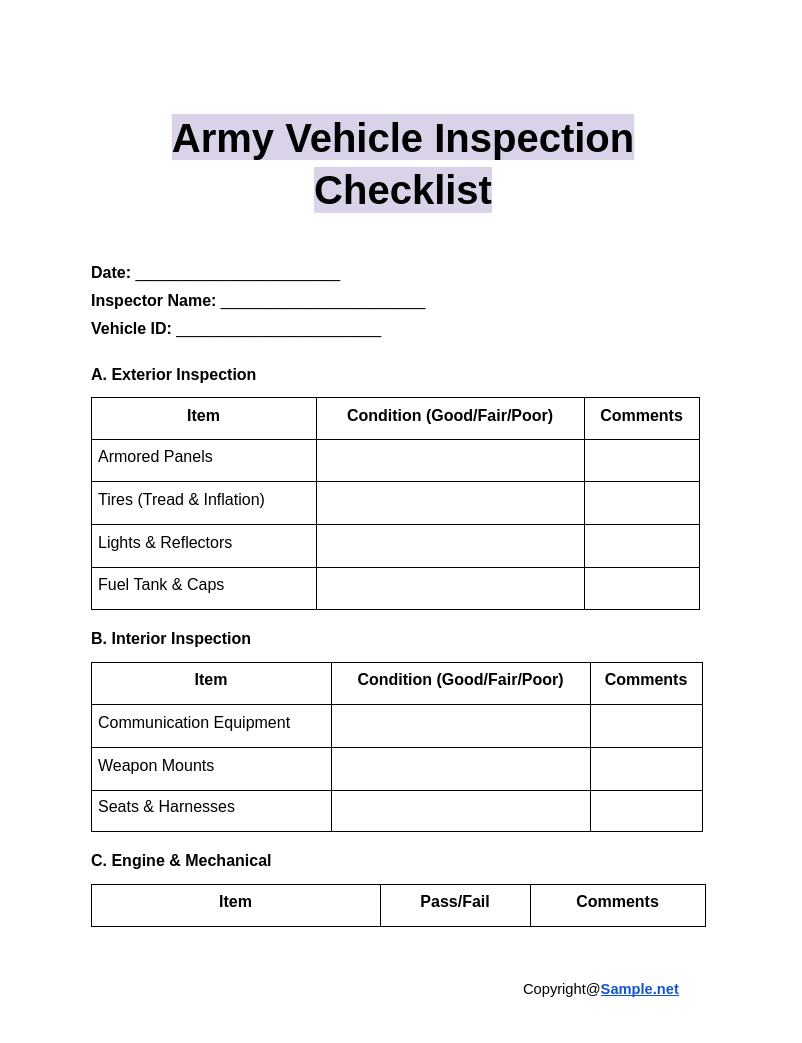
Army Vehicle Inspection Checklist
download now -
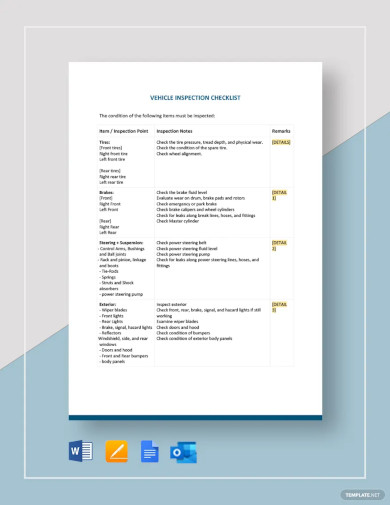
Vehicle Inspection Checklist Template
download now -
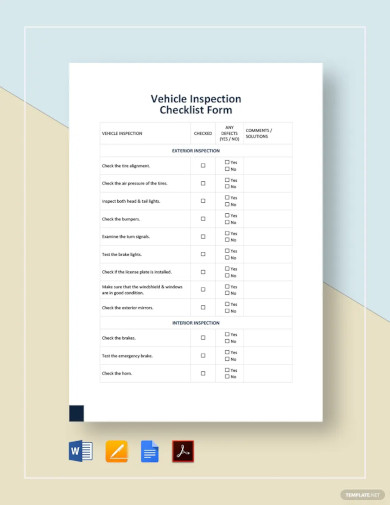
Vehicle Inspection Checklist Form Template
download now -
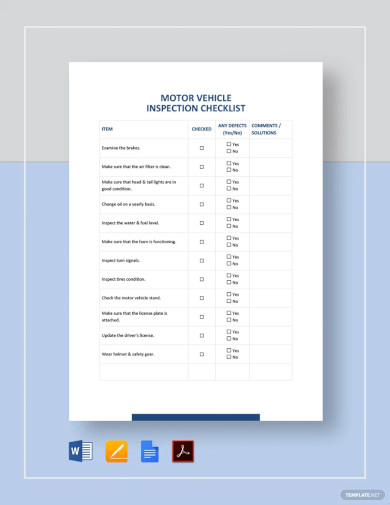
Motor Vehicle Inspection Checklist Template
download now -
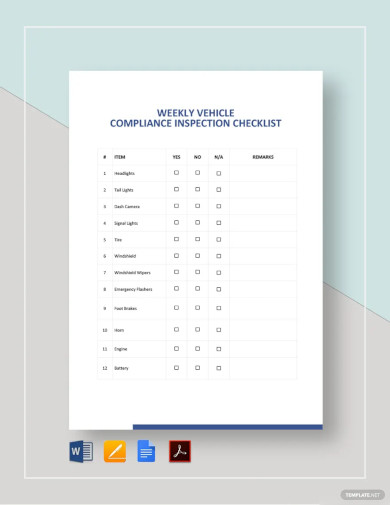
Weekly Vehicle Inspection Checklist Template
download now -
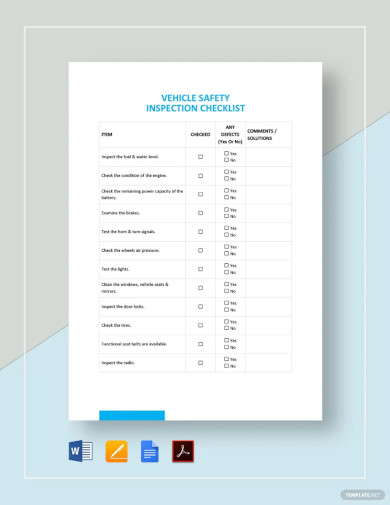
Vehicle Safety Inspection Checklist Template
download now -
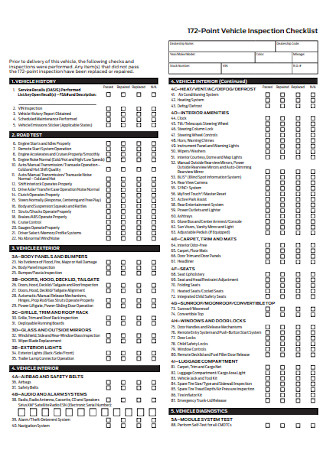
Point Vehicle Inspection Checklist
download now -
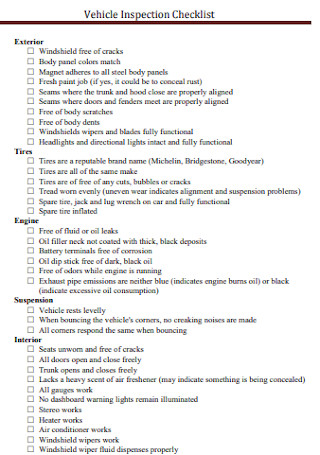
Vehicle Inspection Checklist
download now -
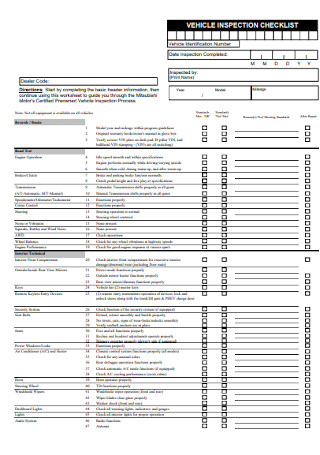
Vehicle Inspection Checklist Example
download now -
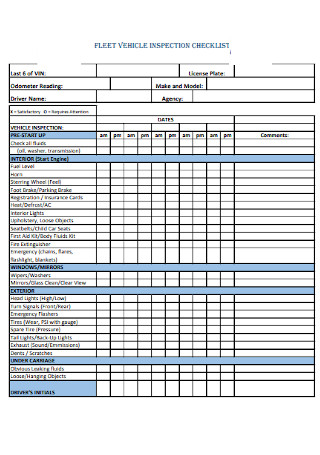
Fleet Vehicle Inspection Checklist
download now -
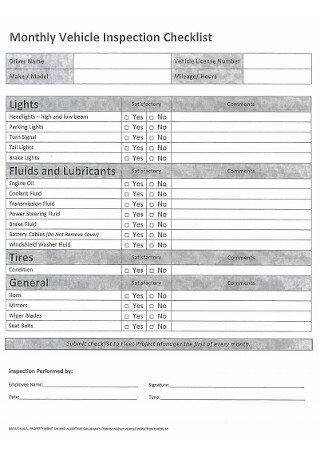
Monthly Vehicle Inspection Checklist
download now -
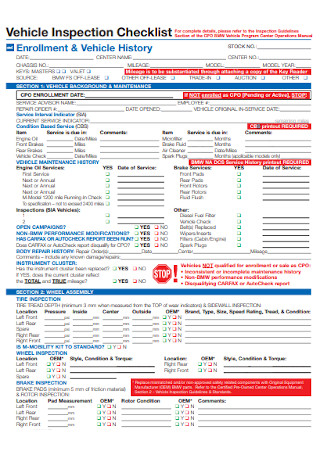
Vehicle Automotive Inspection Checklist
download now -
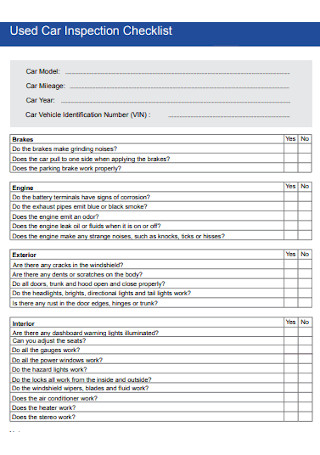
Car Inspection Checklist
download now -
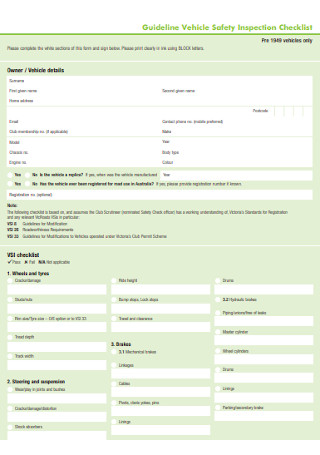
Sample Vehicle Safety Inspection Checklist
download now -
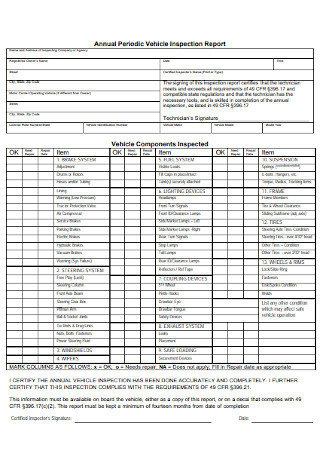
Annual Periodic Vehicle Inspection Checklist
download now -

Auto Shop Vehicle Inspection Checklist
download now -

Employee Vehicle Inspection Checklist
download now -

Sample Exterior Vehicle Inspection Checklist
download now -
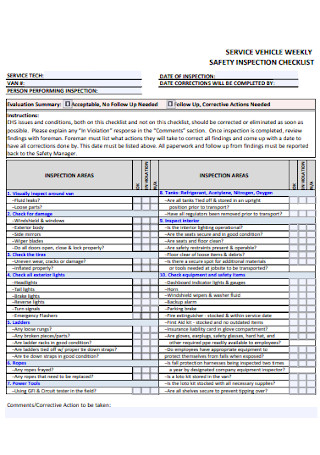
Weekly Vehicle Safety Inspection Checklist
download now -
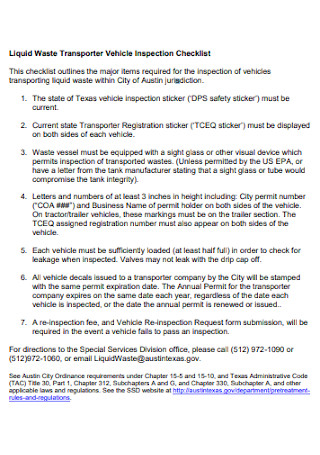
Vehicle Interior Inspection Checklist
download now -
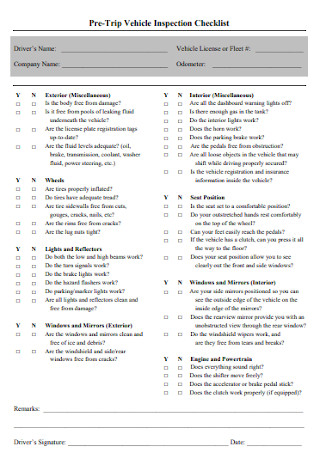
Pre Trip Vehicle Inspection Checklist
download now -

Drivers Daily Vehicle Inspection Report
download now -
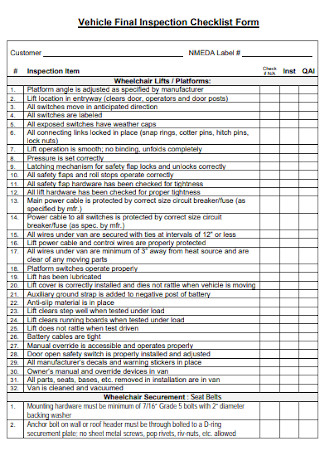
Vehicle Quality Control Inspection Checklist Form
download now -

200 Point Vehicle Inspection Checklist
download now -

Annual Vehicle Inspection Report Checklist
download now -
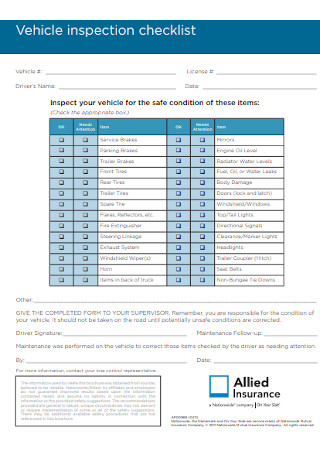
Vehicle Insurance Inspection Checklist
download now -
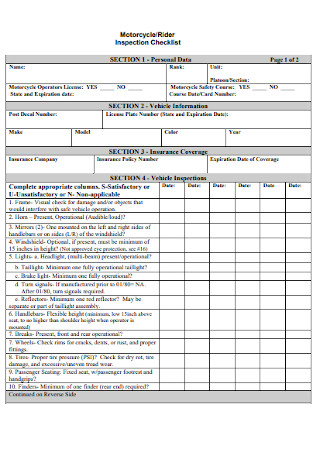
30Point Vehicle Inspection Checklist
download now -
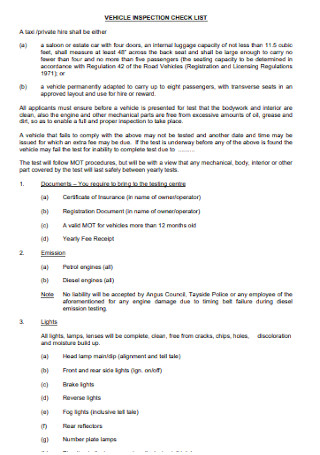
Simple Vehicle Inspection Checklist
download now -
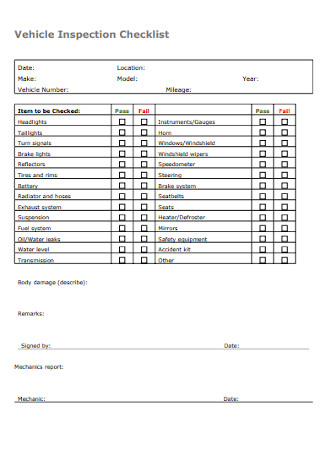
Basic Company Vehicle Inspection Checklist
download now -

Annual Vehicle Inspection Checklist
download now -
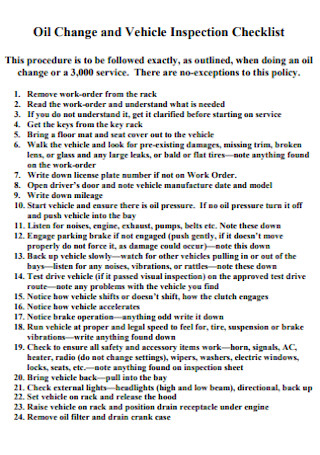
Mechanic Oil Change and Vehicle Inspection Checklist
download now -
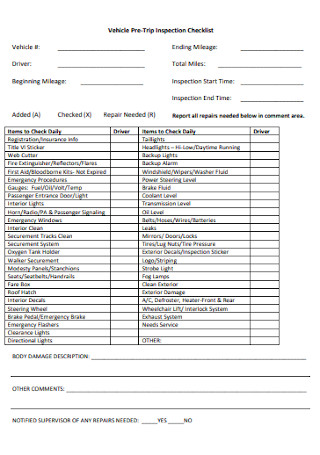
Van Pre Trip Inspection Checklist
download now -
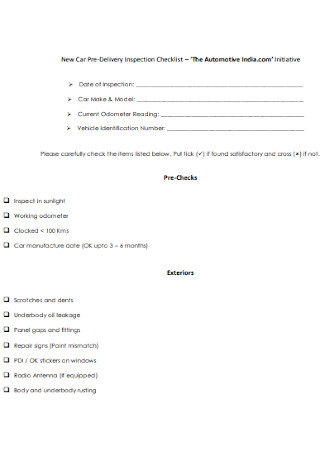
Used Car Inspection Checklist
download now -
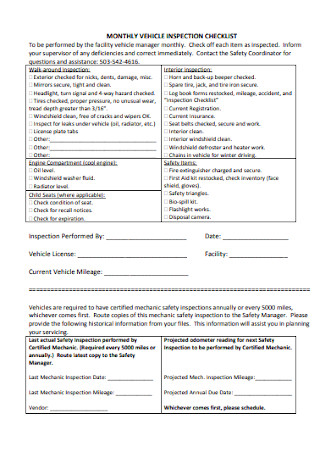
Monthly Vehicle Inspection Checklist Example
download now -

Vehicle Repair Inspection Checklist
download now -
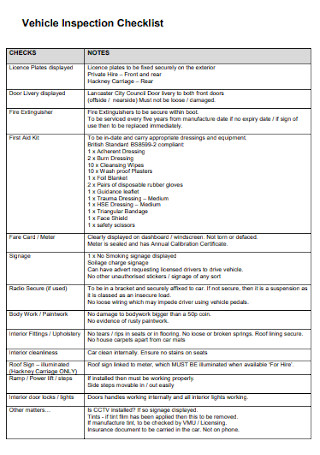
Vehicle Truck Inspection Checklist
download now -
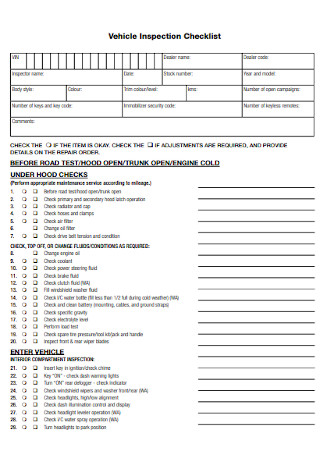
Vehicle Inspection Checklist in PDF
download now -
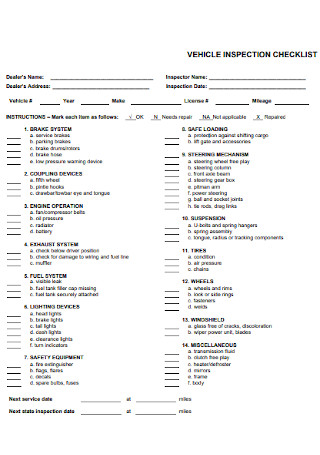
Printable Vehicle Inspection Checklist
download now -
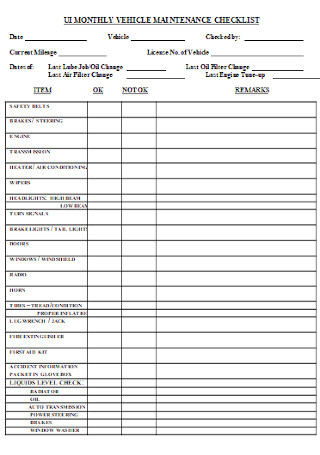
Vehicle Maintenance Inspection Checklist
download now
FREE Vehicle Inspection Checklist s to Download
Vehicle Inspection Checklist Format
Vehicle Inspection Checklist Samples
What is a Vehicle Inspection Checklist?
Elements of a Vehicle Inspection Checklist
How to Create a Vehicle Inspection Checklist
FAQs
What is a 16-point oil change inspection?
What is the reason behind automotive quality control?
What are the types of inspection methods?
What are the essential components of a vehicle inspection checklist?
How can a vehicle inspection checklist improve fleet management?
How do digital vehicle inspection checklists work?

Download Vehicle Inspection Checklist Bundle
Vehicle Inspection Checklist Format
Vehicle Inspection Checklist
Date: _______________________
Inspector Name: _______________________
Vehicle ID/License Plate Number: _______________________
1. General Information
- Make & Model: _______________________
- Odometer Reading: _______________________
- Fuel Level: ( ) Full ( ) 3/4 ( ) 1/2 ( ) 1/4 ( ) Empty
- VIN (Vehicle Identification Number): _______________________
2. Exterior Inspection
| Item | Condition (Good/Fair/Poor) | Comments |
|---|---|---|
| Bodywork (Dents/Scratches) | ||
| Windows & Mirrors | ||
| Tires (Tread & Pressure) | ||
| Lights (Headlights, Taillights, Indicators) | ||
| Wipers & Washer System |
3. Interior Inspection
| Item | Condition (Good/Fair/Poor) | Comments |
|---|---|---|
| Dashboard (Lights/Indicators) | ||
| Seats & Seatbelts | ||
| Horn | ||
| Climate Control/AC | ||
| Audio/Infotainment System |
4. Under the Hood
| Item | Condition (Good/Fair/Poor) | Comments |
|---|---|---|
| Engine Oil Level | ||
| Coolant Level | ||
| Brake Fluid | ||
| Battery (Terminals & Charge) | ||
| Belts & Hoses |
5. Operational Tests
| Item | Pass/Fail | Comments |
|---|---|---|
| Engine Start/Idle | ||
| Brakes (Performance) | ||
| Steering (Alignment & Control) | ||
| Transmission (Gear Shifting) | ||
| Suspension (Noises/Vibrations) |
6. Safety Equipment
| Item | Present/Working | Comments |
|---|---|---|
| First Aid Kit | ||
| Fire Extinguisher | ||
| Reflective Triangles | ||
| Spare Tire & Tools |
Inspector’s Signature: _______________________
Remarks/Notes:
What is a Vehicle Inspection Checklist?
A vehicle inspection checklist is a systematic document or guide used to examine a vehicle’s components and systems to ensure they function correctly. It typically includes checking the engine, brakes, tires, lights, fluids, and other critical elements. This checklist helps identify issues early, ensuring the safety, efficiency, and longevity of the vehicle. Whether for routine maintenance or pre-purchase evaluations, it’s an indispensable tool for vehicle owners and professionals. You can also see more on Daily Vehicle Checklist.
Elements of a Vehicle Inspection Checklist
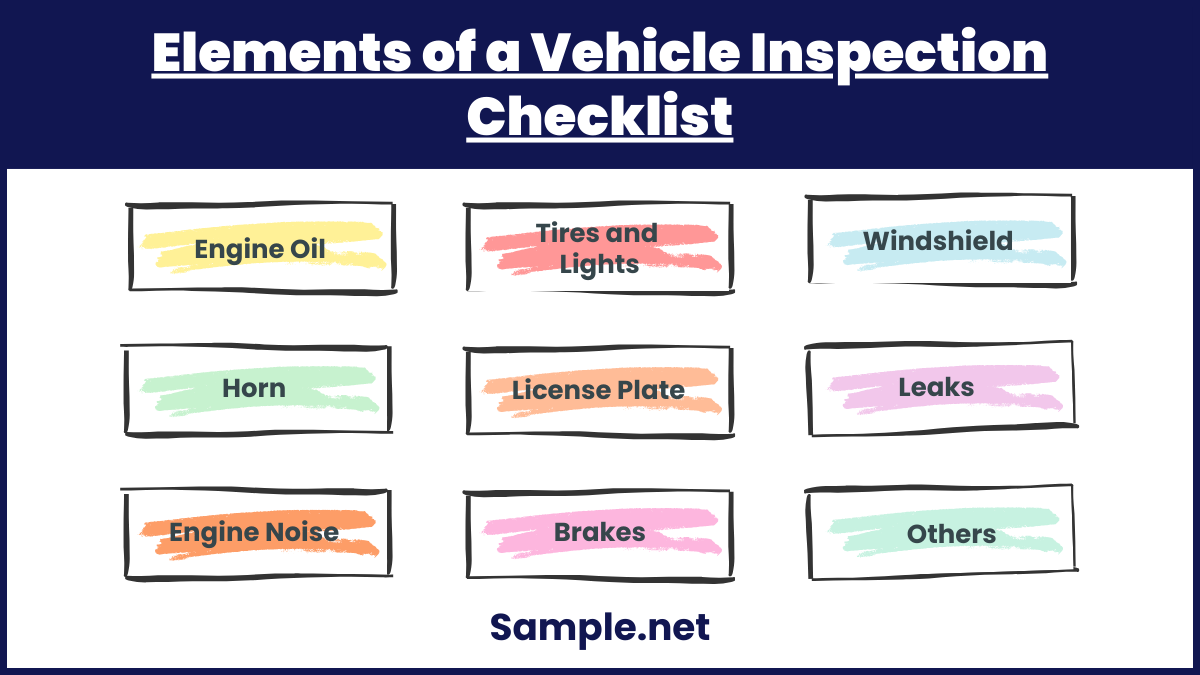
Indeed, car inspection checklists are helpful to ensure that vehicles are still in top-notch condition. So, mechanical problems and defects will be fixed in no time. You prevent operational downtime and vehicular accidents too. But what is usually mentioned inside the checklist? For starters, the vehicle inspection checklist is divided into categories. You can also see more on Car Inspection Checklists. So buckle up as we will introduce to you each category, aka the elements of a vehicle inspection checklist.
How to Create a Vehicle Inspection Checklist
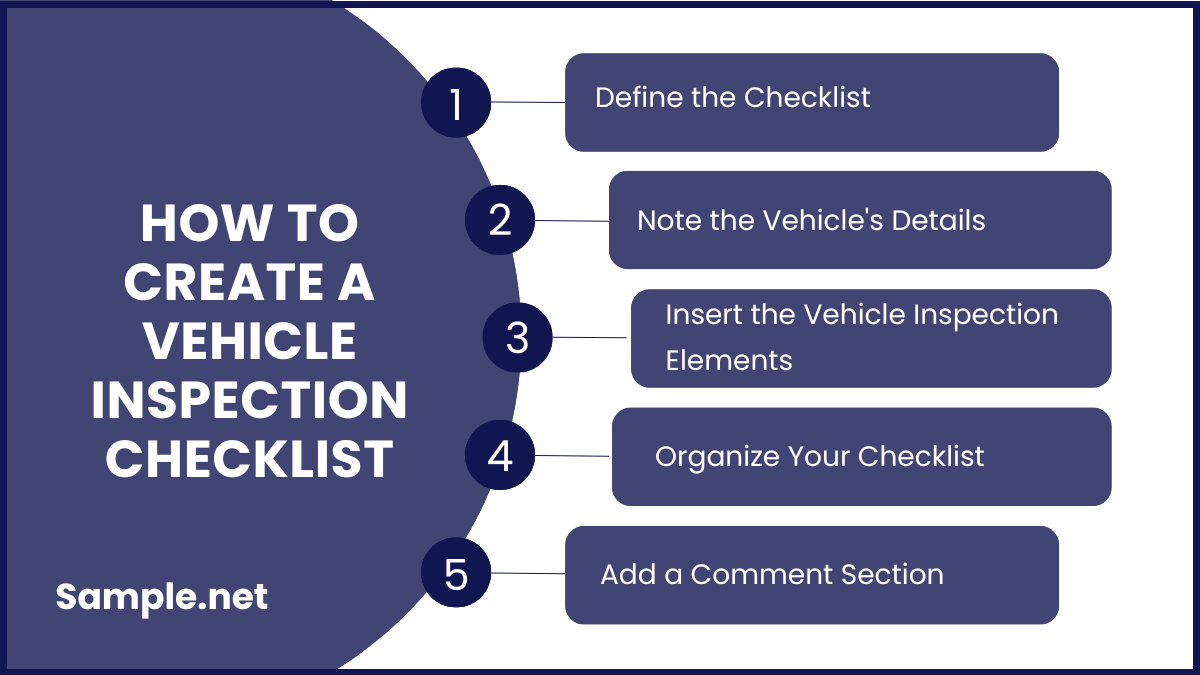
Since you already know the vehicle inspection checklist’s definition, importance, and elements, it’s time to take a drive in figuring out how to make the checklist itself. Rest assured, it is not that complicated as we give you a series of steps on how the process goes. Your only goal is to follow every step given. So without further ado, here are the steps on how to create a vehicle inspection checklist:
Step 1: Define the Checklist
Your checklist should have the “Vehicle Inspection Checklist” label. And any title with a similar meaning to it would suffice. Besides the label, you can be more specific. Start by knowing your audience analysis. For example, is the checklist for mechanics or car owners? You will adjust your content according to your audience. Next, figure out the inspection’s purpose. It can either be to inspect a car’s condition before transferring someone’s title as the owner of that vehicle or to examine as a general periodic inspection. As these details are outlined, the checklist’s introduction is clear.
Step 2: Note the Vehicle’s Details
Be sure to indicate the automobile’s essential info. What are these? Details include the car brand, model, and type. The same goes for determining if the vehicle is used or new. Why is this info necessary, you might ask? Vehicle inspections are not the same for every ride. There are steps in a car maintenance checklist that are specifically made for a particular model. And, the steps for a used car inspection may differ for new rides.
Step 3: Insert the Vehicle Inspection Elements
After you specify the car details, incorporate the elements of vehicle inspection checklists individually. Of course, each detail added should be relevant only for the specified automotive details given earlier. And be sure to categorize your list. An example is when you gather all the steps related to engine inspection in the engine category. So, there will be other groups assigned for the tires, windshield, lights, and so forth. Thus, the whole list looks well-arranged.
Step 4: Organize Your Checklist
Speaking of well-arranged, work into the organization of the entire checklist. Indeed, categories help keep the list organized. But there are still plenty of examples to incorporate. One example is to adjust the format. Do you wish to add boxes or graphic organizers to make a list easier? Or perhaps, enhance the list’s design? Do so. And don’t forget the checkboxes where the checkmarks of each finished task will be indicated. There should be a checkbox beside every job.
Step 5: Add a Comment Section
Give extra space for comments too. Blank boxes and lines already help. Why is this section necessary? Its purpose is for inspectors to write down additional details. Upon evaluation report, there might be parts that need replacements. Therefore, the inspector can write down what the new parts to buy are. And it is up to you regarding how you wish to utilize that bonus category. And once you are confident with how the list turned out, print the form.
FAQs
What is a 16-point oil change inspection?
The 16-point oil change inspection is what technicians do during a car’s oil change. What makes it different from general inspections is how it includes examining the fluids of power-steering, battery, transmission, windshield, and washer. And expect a 30–45-minute oil change from the process.
What is the reason behind automotive quality control?
Automotive quality control is part of a vehicle inspection checklist. And it serves two functions: (1) It checks if the vehicle’s quality meets the product standards and requirements given by suppliers, and (2) it gives an assessment report criteria if the car meets the client’s expectations.
What are the types of inspection methods?
Generally, there are three main types of inspections. They are the pre-production, in-line, and final inspection. And each class differs in terms of what to inspect and how the process goes. Nevertheless, they all aim to serve the same purpose, which is to detect and correct any problem.
What are the essential components of a vehicle inspection checklist?
A comprehensive checklist includes exterior checks (lights, mirrors, windshield), interior checks (dashboard lights, seatbelts), engine components (oil, coolant, belts), and safety features (brakes, airbags). It ensures every critical area of the vehicle is evaluated for safety and efficiency. You can also see more on Vehicle Safety Inspection Checklists.
How can a vehicle inspection checklist improve fleet management?
For fleet owners, a standardized inspection checklist helps ensure all vehicles are consistently checked, minimizing downtime, improving road safety, and optimizing operational efficiency.
How do digital vehicle inspection checklists work?
Digital checklists are used via apps or software, allowing users to record and store inspection data electronically. These tools often include reminders, automated reporting, and integration with maintenance schedules. You can also see more on Used Car Checklists.
